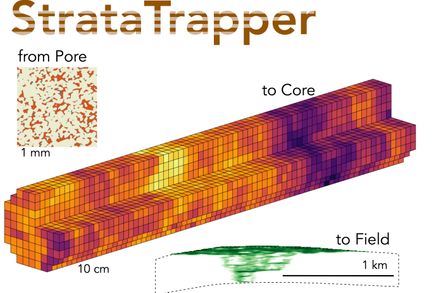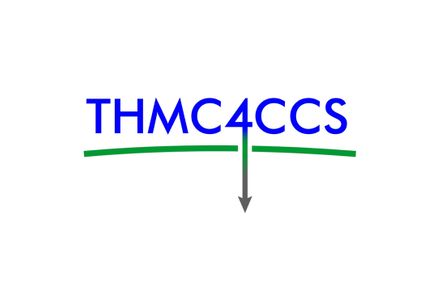BibTex format
@inproceedings{Djabbarov:2016,
author = {Djabbarov, S and Jones, ADW and Krevor, S and Muggeridge, AH},
title = {Experimental and numerical studies of first contact miscible injection in a quarter five spot pattern},
year = {2016}
}
In this section
Our research includes exploring fundamental pore scale fluid dynamics, developing digital rocks analysis techniques, increasing the accuracy of field scale reservoir simulation, and evaluating the feasibility of scaling up CO2 storage to climate relevant scales.

StrataTrapper Advanced Modelling of CO2 Migration and Trapping

THMC4CCS: ThorougH experiMental and numerical investigation of Coupled processes for geologiC Carbon Storage
@inproceedings{Djabbarov:2016,
author = {Djabbarov, S and Jones, ADW and Krevor, S and Muggeridge, AH},
title = {Experimental and numerical studies of first contact miscible injection in a quarter five spot pattern},
year = {2016}
}
TY - CPAPER
AB - Copyright 2016, Society of Petroleum Engineers. We quantify the impact of mobility, simple heterogeneities and grid orientation error on the performance of first contact miscible gas flooding in a quarter five spot configuration by comparing the outputs from experimental and numerical models. The aim is to quantify the errors that may arise during simulation and to identify a workflow for minimizing these when conducting field scale fingering studies. A commercial reservoir simulator was validated by comparing its predictions with the results obtained from physical experiments. An uncorrelated, random permeability distribution was used to trigger fingering in the simulations. The physical experiments were carried out using a Hele-Shaw cell (40x40cm) designed and constructed for this study. The impact of a square low permeability inclusion (20x20cm) on flow was investigated by varying its permeability, location and orientation. For lower mobility ratios (M=2 to M=10) the commercial numerical simulator was able to reproduce the experimental observations within the uncertainty range of the permeability distribution used to trigger the fingers, provided a nine-point scheme was used for the pressure solution. At higher mobility ratios (M=20 to M=100) the grid orientation effect meant that the simulator overestimated the areal sweep even when a nine-point scheme was used. The introduction of a square, low permeability inclusion near the injection well reduced the discrepancy between experimental and numerical results, bringing it back within uncertainty limits in some of the cases. This was mainly because the real flow was then forced to move parallel to the edges of the Hele-Shaw cell and thus parallel to the simulation grid. Breakthrough times were well predicted by the numerical simulator at all mobility ratios.
AU - Djabbarov,S
AU - Jones,ADW
AU - Krevor,S
AU - Muggeridge,AH
PY - 2016///
TI - Experimental and numerical studies of first contact miscible injection in a quarter five spot pattern
ER -